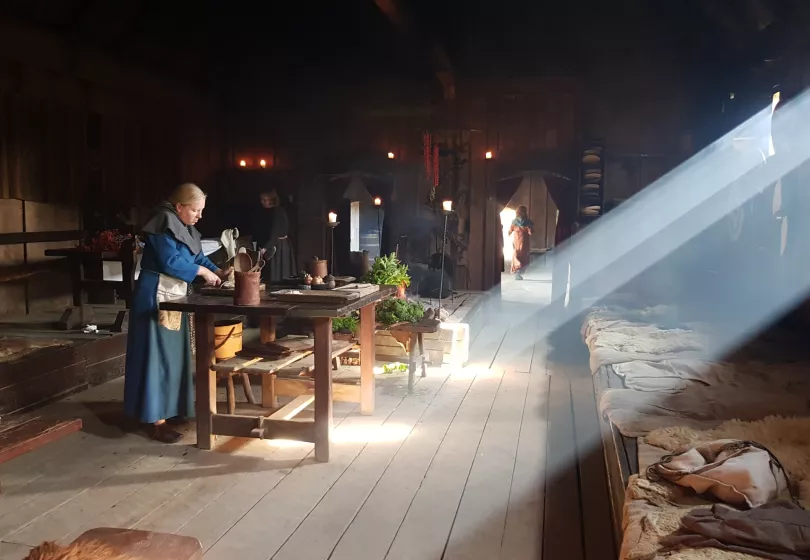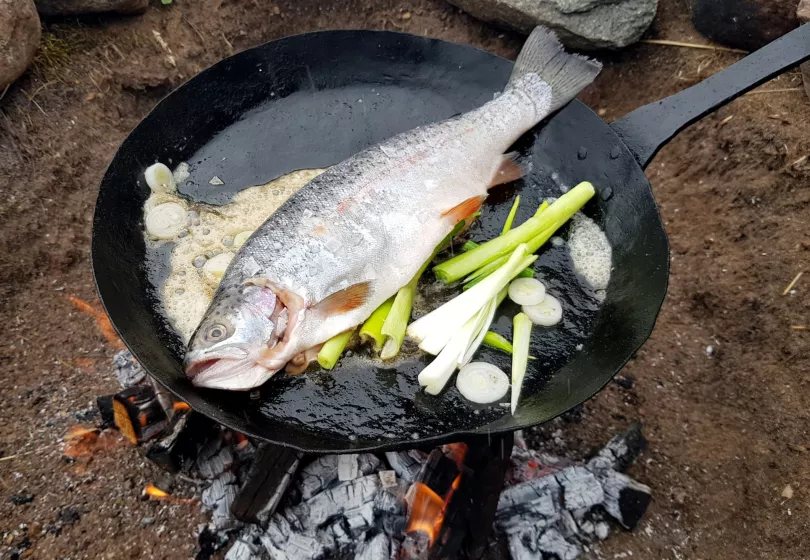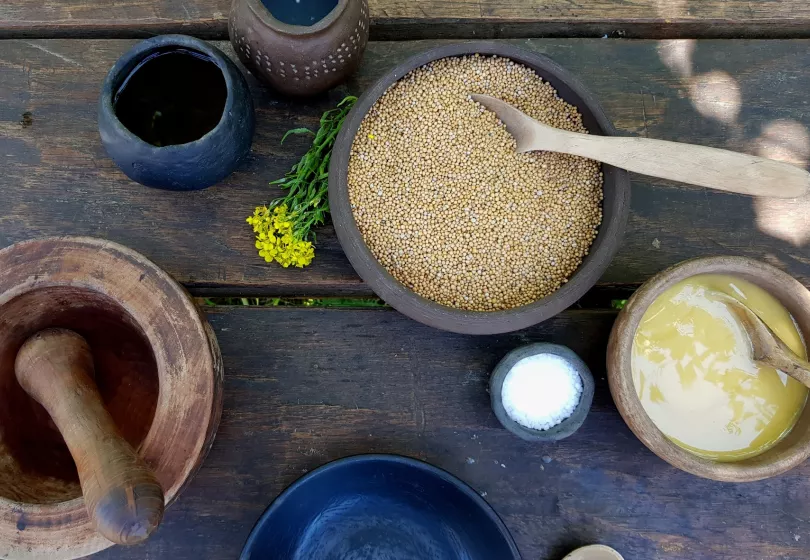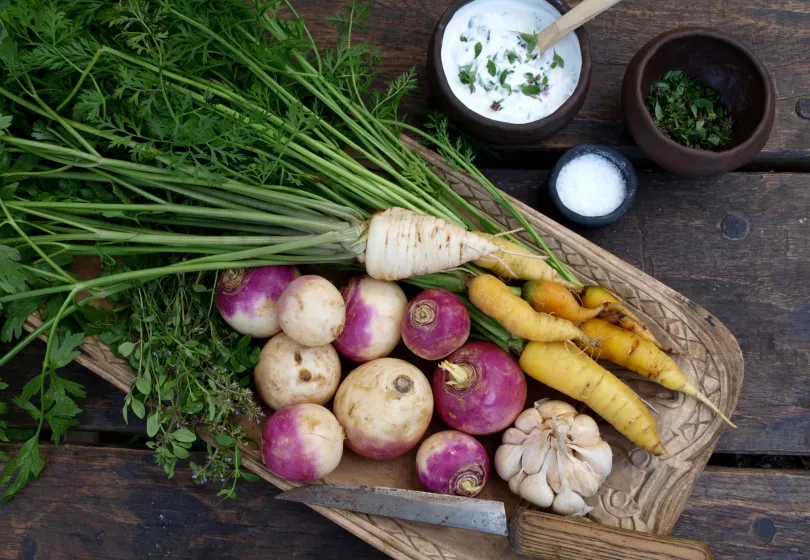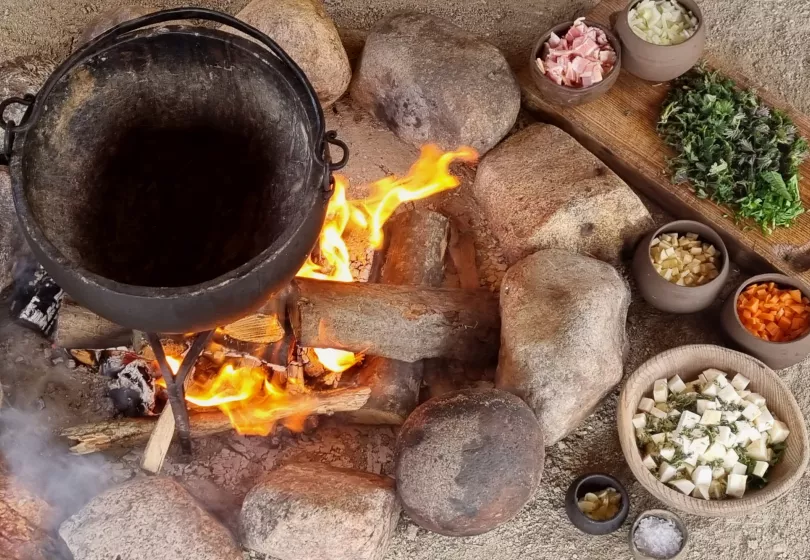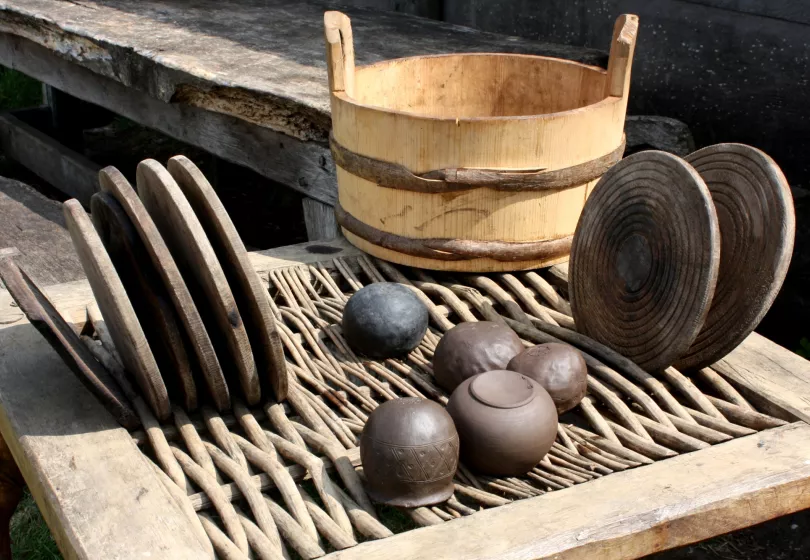The taste of the Viking Age
In the Viking Age, food was linked to survival. It was absolutely crucial to get the most out of the cultivated and wild produce available. Archaeological excavations of e.g. kitchen middens, cabbage gardens, fields, fireplaces and cooking pots with burnt food remnants give us a good picture of the foods available in Viking Age Denmark, but not all people had equal access to them. Your diet depended on your social rank in society and where you lived geographically. A free person in a reliatively wealthy household naturally enjoyed fresh meat, fine bread, dairy products, mead and good beer more often than a poor person, let alone a slave.
Due to processing, flavouring agents and preservation, the Viking Age food tasted different from ours today. Vegetables such as carrot, parsnip, leek, pea and onion were not nearly as big and sweet as they are today after many generations of improvement. With white salt being extremely expensive in the Viking Age, they would not have used it in such large quantities as we to today. They may have salted their food with seaweed or samphire or not at all. Today, we are used to food that tastes sweet and salty. We enjoy fresh, crisp vegetables, juicy and tender meat as well as exotic ingredients available all year round. That is not at all how it was in the Viking Age, when most of the ingredients available were preserved, primarily smoked or dried and in some cases perhaps also salted or pickled in whey.
There are no recipes from the period, but when we use the Viking Age ingredients in our cooking, we approach the food that the Vikings ate. And when we imitate their cooking techniques and flavours, we get even closer to real Viking food.
Viking inspired recipes
We can learn a great deal from the Vikings' necessary focus on seasonal produce, nature and the best possible use of resources. In Ribe VikingeCenter, some kind of cooking is usually taking place and we have had a focus on Viking Age food culture with the purpose of inspiring modern day families to embark on campfire cooking.
As mentioned, there are no recipes from the Viking Age, but from excavations we do know which ingredients were available. Based on that, we have created a number of recipes with the goal to create an understanding, primarily among children, of the origin of the produce, the development of our food culture, and the value of cooking and eating together. But for cooking to bring the busy family together, the food must be exciting, accessible and full of flavour, and so with our dishes we have had modern flavour compositions in mind. In other words, the recipe collection is not a strictly scientific picture of the Vikings' everyday food.
Let's cook a meal
In our busy lives, time is precious, and time with our children even more so. When we join together to create a meal, we can experience a fantastic fellow feeling, a certain happiness and a relaxed space with room for both little ones, young ones and grown-ups. Viking inspired food does not have to be boring, nor campfire food complicated.
Get the family together or invite some friends over, make a campfire or light the garden barbecue. Grab a few ingredients, delegate the different tasks, co-operate to create the meal and sit down together to enjoy it. Make outdoor cooking a fun activity for the whole group and welcome both the creative chaos and the quiet peace around the fire.

